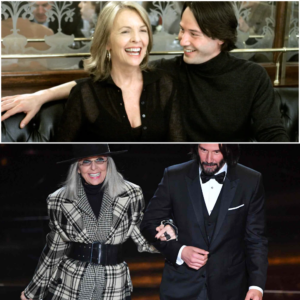At just 19 years old, Henry Cavill stepped onto the cinematic stage in a way that few could have predicted would launch him into global stardom. His appearance in the 2002 historical adventure film The Count of Monte Cristo, an adaptation of Alexandre Dumas’ classic novel, marked his second film role and a pivotal moment in his early career. Playing the earnest and honorable Albert Mondego, Cavill brought a youthful charm and understated talent that hinted at the blockbuster icon he would become—known later as Superman in the DC Extended Universe and Geralt of Rivia in Netflix’s The Witcher. As we revisit this underrated gem released over two decades ago, it’s clear that Cavill’s performance was a spark that should have ignited his rise to fame much sooner. Let’s explore how this young actor’s debut left an indelible mark and why it took the world a little longer to recognize his potential.
A Young Star Emerges
Released on January 25, 2002, The Count of Monte Cristo introduced audiences to a then-unknown Henry Cavill in a supporting role that, while brief, carried significant emotional weight. Directed by Kevin Reynolds, the film stars Jim Caviezel as Edmond Dantès, a man wrongfully imprisoned who transforms into the vengeful Count of Monte Cristo to reclaim his life and exact justice. Cavill portrayed Albert Mondego, the son of Dantès’ former lover Mercédès (Dagmara Domińczyk) and his betrayer Fernand Mondego (Guy Pearce). At the time, Cavill was a fresh face, having only appeared in the little-known Laguna (2001) prior to this. Yet, his performance stood out, offering a glimpse of the charisma and depth that would define his later successes.
Filmed primarily on the picturesque island of Malta, with additional scenes shot in Ireland, the movie captured the swashbuckling spirit of Dumas’ tale. Cavill’s Albert is introduced in the second half, a young man of privilege unaware of the tangled web of his parentage. His character serves as a moral anchor, challenging the Count to a duel out of honor before learning the shocking truth: Albert is Dantès’ biological son, not Fernand’s. This revelation, handled with sensitivity by Cavill, adds a layer of humanity to the story’s revenge-driven plot, making Albert a standout despite his limited screen time.
The Making of a Performance
Cavill’s journey to The Count of Monte Cristo was anything but conventional. Born on May 5, 1983, in Jersey, Channel Islands, he was discovered by casting directors while still a student at Stowe School in England. His early interest in acting, sparked by school plays like A Midsummer Night’s Dream and Grease, set the stage for his entry into film. However, landing the role of Albert came with a challenge that tested his resolve. As he later revealed in a 2013 GQ interview, producers asked him to lose weight, a request conveyed through his mother during the audition. Feeling “really pissed off” but determined, Cavill shed 21 pounds (1.5 stone) in a short time, showcasing the discipline that would later define his physical transformations for roles like Superman.
On set, Cavill was surrounded by seasoned actors, including Richard Harris as the wise Abbé Faria and Luis Guzmán as the loyal Jacopo. Yet, he held his own, delivering lines with a poise that belied his inexperience. His duel scene with Caviezel, though choreographed with the help of the late fight coordinator William Hobbs, showcased a natural athleticism honed from his rugby-playing days. Fans and critics alike noted his ability to convey Albert’s innocence and honor, contrasting sharply with Caviezel’s brooding Dantès. This dynamic hinted at Cavill’s potential to carry more substantial roles, a promise that would take years to fully materialize.
Why It Should Have Been a Breakout
The Count of Monte Cristo received a respectable 74% approval rating on Rotten Tomatoes and grossed over $75 million worldwide, a solid achievement for a period adventure film. Roger Ebert awarded it three out of four stars, praising its swashbuckling charm and “performances by good actors who are clearly having fun.” Yet, despite this success, Cavill’s contribution went largely unnoticed at the time. The film’s focus on Caviezel and Pearce overshadowed the young actor, and the industry’s attention was elsewhere—geared toward bigger franchises and established stars.
This oversight is perplexing given Cavill’s impact. Albert’s role, expanded from the novel where he exits early, became a emotional linchpin in the film. His confrontation with the Count and the eventual reconciliation with his true father offered a redemptive arc that resonated with viewers. Posts on platforms like X reflect a growing nostalgia for Cavill’s early work, with fans calling him “adorable” and “a babe” in the role, suggesting a belated appreciation for his debut. Had the industry seized on this performance, Cavill might have leapfrogged to leading roles much earlier, potentially altering the trajectory of his career.
The Road to Recognition
Following The Count of Monte Cristo, Cavill’s path was a mix of promise and struggle. He appeared in I Capture the Castle (2003), a romantic comedy that garnered decent reviews but limited reach, and faced setbacks with flops like Hellraiser: Hellworld (2005) and Tristan & Isolde (2006). These early roles, often supporting or straight-to-video, kept him in the shadows. It wasn’t until The Tudors (2007–2010), where he played Charles Brandon, that he gained critical acclaim and a broader audience. The series’ success, including an Emmy win in 2008, marked a turning point, paving the way for his casting as Superman in Man of Steel (2013).
Looking back, Cavill’s delay in breaking out can be attributed to timing and typecasting. In the early 2000s, period dramas like The Count of Monte Cristo were giving way to modern blockbusters, and Cavill’s youthful appearance may have pigeonholed him as a supporting player. Missed opportunities, such as losing the Superman role in Superman Returns (2006) to Brandon Routh and the James Bond role in Casino Royale (2006) to Daniel Craig, further delayed his ascent. Yet, his persistence paid off, with Man of Steel cementing his status as a leading man.
A Performance Reexamined
Revisiting The Count of Monte Cristo today, Cavill’s performance stands out as a testament to his early talent. His Albert is not just a privileged youth but a character grappling with identity and loyalty, traits Cavill would later explore in The Witcher’s Geralt. The film’s Malta locations, with their authentic 19th-century ports, and Ireland’s stately estates provided a fitting backdrop, but it was Cavill’s earnest delivery that elevated the role. Scenes like Albert’s kidnapping and rescue, staged by the Count as part of his revenge, showcase a young actor capable of emotional nuance, a skill that would define his later portrayals of complex heroes.
Critics and fans now recognize this potential. Articles from sources like ScreenRant and Collider argue that Cavill’s role should have made him a star, with ScreenRant noting his “standout performance” as Albert’s moral backbone. The film’s blend of swashbuckling action and tragedy, preserved through Hobbs’ realistic sword fights, offered Cavill a platform to shine, yet the industry’s focus on Caviezel and Pearce diluted his spotlight. This hindsight underscores a missed opportunity to fast-track one of Hollywood’s brightest talents.
The Legacy of a Young Cavill
As of June 25, 2025, at 4:33 PM +07, Henry Cavill’s career has soared, with recent projects like The Ministry of Ungentlemanly Warfare (2024) and potential returns to the DC Universe keeping him in the public eye. Yet, The Count of Monte Cristo remains a nostalgic touchstone, a reminder of his humble beginnings. His journey from a weight-conscious teenager to a muscular action star mirrors Albert’s own growth from innocence to awareness, a parallel that adds depth to his early work.
Cavill himself has spoken fondly of the experience, crediting Hobbs’ mentorship for shaping his approach to action roles, as noted in interviews about The Witcher. Fans on X echo this admiration, with comments praising his “baby face” and the film’s enduring appeal. This grassroots support suggests that The Count of Monte Cristo could find a new audience, reappraising Cavill’s debut as a cornerstone of his rise.
Looking Ahead
Why did it take so long for Cavill to become a household name? Perhaps the early 2000s favored established stars over emerging talents, or maybe his period-piece niche delayed his transition to mainstream blockbusters. Whatever the reason, The Count of Monte Cristo proves that greatness was there all along. As Cavill continues to evolve, from Superman to potential new franchises, his 2002 performance invites us to reconsider the roots of his stardom. For fans and newcomers alike, revisiting this film is a journey worth taking—a chance to see a young Henry Cavill, full of promise, stepping into a legacy that would soon captivate the world.

